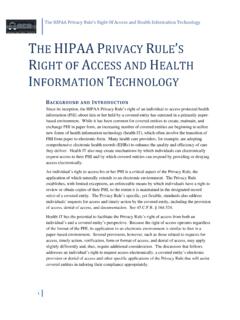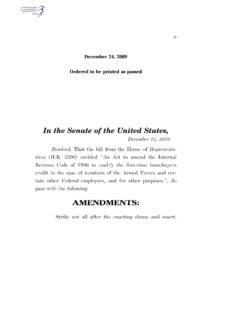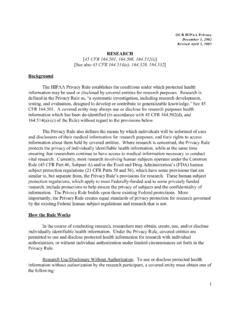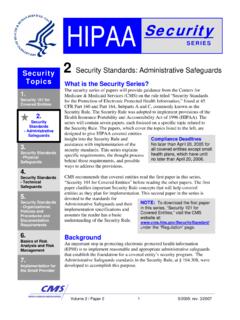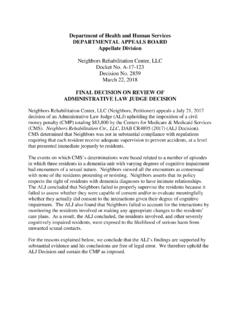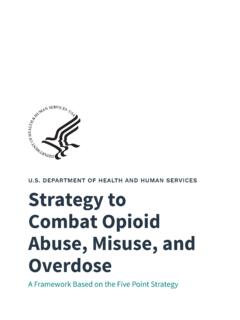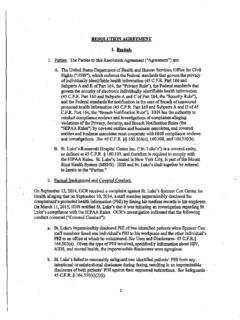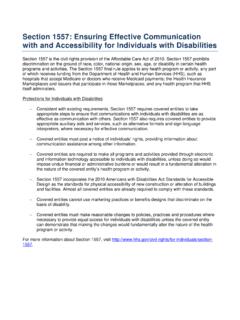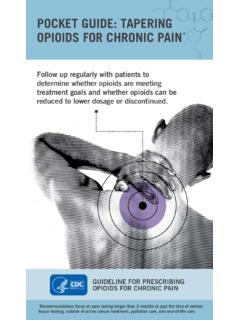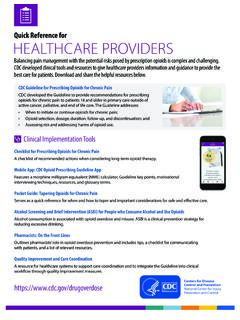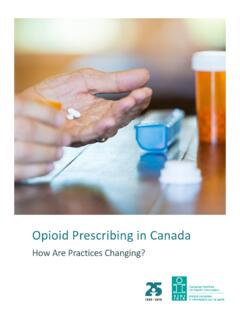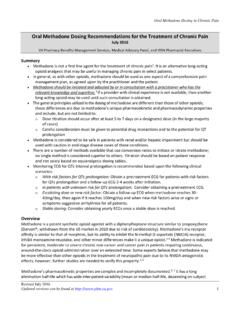Transcription of PAIN MANAGEMENT BEST PRACTICES - HHS.gov
1 BEST PRACTICESPAIN MANAGEMENT BEST PRACTICES INTER-AGENCY TASK FORCE REPORTU pdates, Gaps, Inconsistencies, and RecommendationsPAIN MANAGEMENT DRAFT FINAL REPORTTHIS PAGE LEFT INTENTIONALLY BLANK EXECUTIVE SUMMARY DRAFT FINAL REPORT May 6, 2019 1 EXECUTIVE SUMMARY Patients with acute and chronic pain in the United States face a crisis due to significant challenges in obtaining adequate care, resulting in profound physical, emotional, and societal costs. According to the Centers for Disease Control and Prevention (CDC), 50 million adults in the United States have chronic daily pain , with million adults experiencing high-impact chronic pain that interferes with daily life or work activities.
2 The cost of pain to our nation is estimated at between $560 and $635 billion annually. At the same time, our nation is facing an opioid crisis that, over the past decade, has resulted in an unprecedented wave of overdose deaths associated with prescription opioids, heroin, and synthetic opioids. The pain MANAGEMENT Best PRACTICES Inter-Agency Task Force (Task Force) was convened by the US Department of Health and Human Services (HHS) in conjunction with the Department of Defense (DOD) and the Veterans Administration (VA) with the Office of National Drug Control Policy (ONDCP) to address acute and chronic pain in light of the ongoing opioid crisis.
3 The Task Force mandate is to identify gaps, inconsistencies, and updates, and to make recommendations for best PRACTICES for managing acute and chronic pain . The 29 member Task Force included federal agency representatives as well as non-federal experts and representatives from a broad group of stakeholders. The Task Force considered relevant medical and scientific literature and information provided by government and non-government experts in pain MANAGEMENT , addiction, mental health and representatives from various disciplines.
4 The Task Force also reviewed and considered patient testimonials and public meeting comments, including approximately 6,000 comments from the public submitted during a 90-day public comment period and 3,000 comments from two public meetings. The Task Force emphasizes the importance of individualized patient-centered care in the diagnosis and treatment of acute and chronic pain . This report is broad and deep and will have sections that are relevant to different groups of stakeholders regarding best PRACTICES . It is encouraged to see the table of contents and the sections and sub-sections of this broad report to best identify that which is most useful for the various clinical disciplines, educators, researches, administrators, legislators and other key stakeholders.
5 The report emphasizes the development of an effective pain treatment plan after proper evaluation to establish a diagnosis with measurable outcomes that focus on improvements including quality of life (QOL), improved functionality, and Activities of Daily Living (ADLs). Achieving excellence in acute and chronic pain care depends on the following: An emphasis on an individualized patient-centered approach for diagnosis and treatment of pain is essential to establishing a therapeutic alliance between patient and clinician. Acute pain can be caused by a variety of different conditions such as trauma, burn, musculoskeletal injury, neural injury, as well as pain due to surgery/procedures in the perioperative period.
6 A multi-modal approach that includes medications, nerve blocks, physical therapy and other modalities should be considered for acute pain conditions. A multidisciplinary approach for chronic pain across various disciplines, utilizing one or more treatment modalities, is encouraged when clinically indicated to improve outcomes. These include the following five broad treatment categories. These categories have been reviewed with an identification of gaps/inconsistencies with recommendations for best PRACTICES : o Medications: Various classes of medications, including non-opioids and opioids, should be considered for use.
7 The choice of medication should be based on the pain diagnosis, the mechanisms of pain , and related co-morbidities following a thorough history, physical exam, other relevant diagnostic procedures and a risk-benefit assessment that demonstrates the benefits of a medication outweighs the risks. The goal is to limit adverse outcomes while ensuring that patients have access to medication-based treatment that can enable a better quality of life and function. Ensuring safe medication storage and appropriate disposal of excess medications is important to ensure best clinical outcomes and to protect the public health.
8 EXECUTIVE SUMMARY DRAFT FINAL REPORT May 6, 2019 2 o Restorative Therapies including those implemented by physical therapists and occupational therapists ( , physiotherapy, therapeutic exercise, and other movement modalities) are valuable components of multidisciplinary, multimodal acute and chronic pain care. o Interventional Approaches including image-guided and minimally invasive procedures are available as diagnostic and therapeutic treatment modalities for acute, acute on chronic , and chronic pain when clinically indicated.
9 A list of various types of procedures including trigger point injections, radiofrequency ablation, cryoneuroablation, neuro-modulation and other procedures are reviewed. o Behavioral Health Approaches for psychological, cognitive, emotional, behavioral, and social aspects of pain can have a significant impact on treatment outcomes. Patients with pain and behavioral health comorbidities face challenges that can exacerbate painful conditions as well as function, QOL, and ADLs. o Complementary and Integrative Health, including treatment modalities such as acupuncture, massage, movement therapies ( , yoga, tai chi), spirituality, among others, should be considered when clinically indicated.
10 Effective multidisciplinary MANAGEMENT of the potentially complex aspects of acute and chronic pain should be based on a biopsychosocial model of care. Health systems and clinicians must consider the pain MANAGEMENT needs of the special populations that are confronted with unique challenges associated with acute and chronic pain , including the following: children/youth, older adults, women, pregnant women, individuals with chronic relapsing pain conditions such as sickle cell disease, racial and ethnic populations, military active duty and reserve service members and Veterans, and cancer and palliative care.
